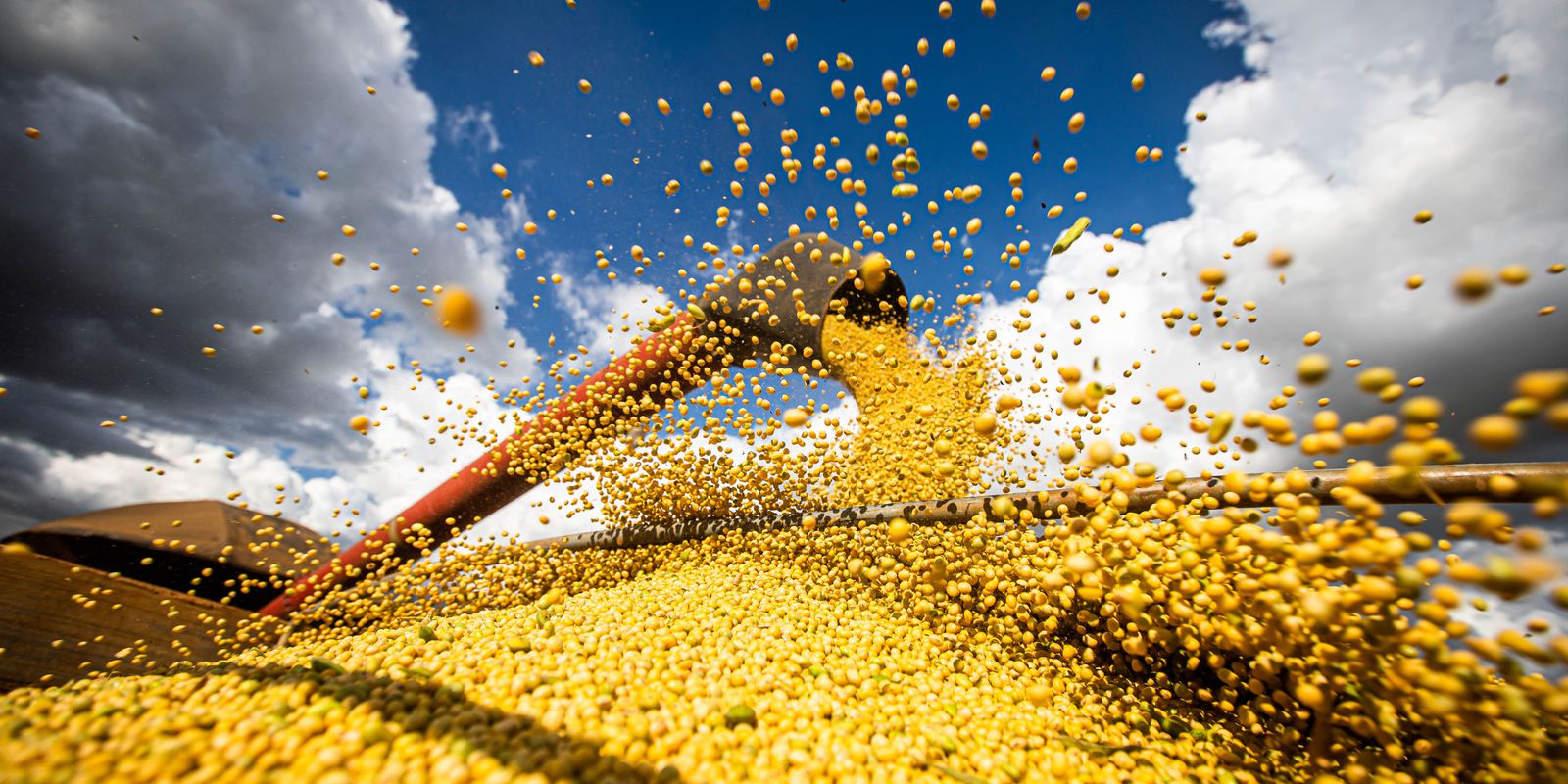The first projections for grain production for the 2022/23 harvest point to a harvest of 308 million tons. According to data released this Wednesday (24), in Brasília, by the National Supply Company (Conab), the result is mainly driven by the good performance of the corn, soybean, rice, beans and cotton markets.
According to the figures, which present the main market variables and trends for crops, the total production of these five main products grown in the country, which correspond to more than 90% of Brazilian grain production, is estimated at 294, 3 million tons.
Soy
For soybeans, Conab’s perspective points to a record production scenario, being projected at 150.36 million tons for the next season. In the company’s assessment, grain prices should continue to be attractive, as world supply and demand for the oilseed remain adjusted, reflecting a growth trend of 3.54% in area for the crop, which could reach 42.4 million of hectares.
The productivity of the 2022/23 cycle should show recovery in relation to the current crop after the climatic problems registered in the southern states of the country and in part of Mato Grosso do Sul.
With the expected improvement in productivity, Conab calculates that the greater availability of the grain should provide exports of 92 million tons, an increase of 22.2% compared to the 2021/22 harvest, a record for the crop.
Even with the estimated increase in shipments, stocks for the 2022/23 season should also grow by around 3.9 million tons compared to what is forecast for the current cycle, with 9.89 million tons being projected.
Cotton
In the case of cotton, the analysis also points to a scenario of increase in area, productivity and consequent increase in production. The first forecasts for the 2022/23 crop indicate a harvest of 2.92 million tons of the plume. According to the company, the factors that drive the advancement of the culture are the high level of product prices, good profitability and early commercialization, among others.
However, the uncertainties of the world economic scenario may restrict this growth. In view of this production, a resumption of the exported volume is expected to reach a level close to two million tons of the final product, in addition to a carryover stock of approximately 1.75 million tons of lint at the end of 2023.
Rice
In the case of rice, the cultivated area should show a further reduction in the 2022/23 harvest. With the high cost of production, farmers tend to opt for crops that have better estimates of profitability and liquidity, such as corn and soybeans.
Even so, production in the 2022/23 crop should be around 11.2 million tons, given the possibility of a recovery in productivity compared to 2021/22, which suffered from the availability of water resources for its good development.
Bean
According to Conab, a similar scenario is expected for beans. The current better profitability of competing grains should reflect in a mild retraction of the legume area. As a result, production tends to remain well adjusted to demand, keeping the total harvest at around three million tons. The foreseen scenario is one of normality in relation to domestic supply.
Corn
For corn, a total production of 125.5 million tons is expected. In the first crop, there is a projection of a slight drop in area, with a negative variation of 0.6%, since the cereal competes with soybeans.
However, with a possible recovery in productivity, after the water shortage in important producing regions in the 2021/22 season, production could reach 28.98 million tons. In the second harvest of the grain, an increase in both area and productivity is estimated, which may result in a harvest of 94.53 million tons, an expansion of 8.2% compared to the 2021/22 harvest.
meat market
For the next crop year, meat producers, especially poultry and pork, are faced with the challenge of managing production costs, given higher corn prices. In this scenario of high costs, the trend is for a lower margin of profitability for the sector.
In the case of swine farming, another factor to be considered is the recovery of Chinese herds, hit hard by African Swine Fever (ASF) from 2018, which has been impacting domestic live swine prices, in addition to influencing the reduction of exports to the China.
Also according to Conab’s analysis, the trend for 2023 is for a 6.7% increase in slaughter, which, in turn, should not fully convert into an increase in protein production due to the lower average weight expected due to the high costs of feeding the flocks.
Poultry slaughters projected for 2023 also tend to show a growth of 3.2% compared to this year, being estimated at 6.29 billion chickens, while exports should show a slight drop of 1.7%, reaching 4 .5 million tons. This combination of factors results in a probable increase in domestic supply of 4.2%, increasing availability per capita above 51 kg/inhabitant/year.
















